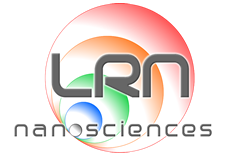In Vivo Assessment of Acute Toxicity and Immunotoxicity of Quantum Dots with Different Physicochemical Properties
Résumé
Semiconductor nanocrystals, or quantum dots, have received a great attention in the biomedical area because of their unique optical properties. However, their use in biomedical applications such as imaging, molecular tracking and drug delivery is limited due to safety concerns. The present study was conducted to assess acute toxicity of quantum dots with different chemical composition of the core and surface charge in mouse model. In addition, the immunotoxicity of CdSe/ZnS QDs was estimated. CdSe/ZnS, PbS/CdS/ZnS, CuInS2/ZnS QDs were synthesized and modified with PEG derivatives following standard procedure. After solubilization the hydrody-namic diameter and surface charge of QDs were characterized. Our results showed that the acute toxicity of QDs is determined by both their surface charge and the chemical composition of the core. Immunotoxicity of CdSe/ZnS-PEG QDs was evaluated at the dose of 25 mg/kg (LD10). Concentration of IL-12p70, TNF, IFN-γ, MCP-1, IL-6, IL-10 was measured using cytometric bead array. The intravenous injection of CdSe/ZnS-PEG QDs was demonstrated to cause short-term elevation of the level of two pro-inlammatory cytokines.
| Origine | Fichiers produits par l'(les) auteur(s) |
|---|

